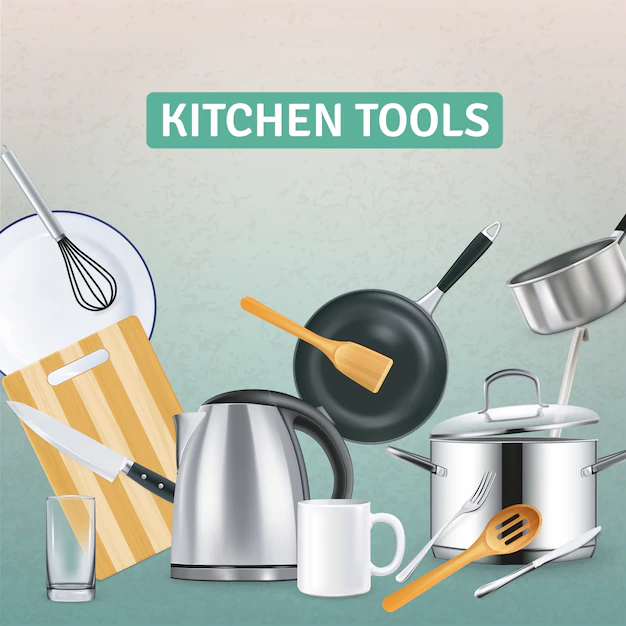Linked article: https://www.slingo.com/blog/lifestyle/staub-vs-le-creuset/
More and more people are starting to prioritize eco-friendly choices in their daily lives, and that includes the kitchen. One of the best ways to cook sustainably is by using eco-friendly cookware. But with so many options out there, it can be tough to figure out what’s actually good for the environment—and safe for you.
In this guide, we’ll walk you through the best eco-friendly cookware options, how they compare to traditional choices, and why it might be time to give your kitchen an eco-upgrade.
Why Go Eco-Friendly in the Kitchen?
Choosing eco-friendly cookware isn’t just a trend; it’s a meaningful way to reduce your environmental impact. Traditional non-stick pans, for example, often contain chemicals like PFOA and PFTE, which can leach harmful toxins into your food—and the environment. Many conventional pots and pans are also made from materials that don’t biodegrade and end up as waste.
Switching to sustainable cookware can help minimize pollution, reduce waste, and promote safer cooking practices. Plus, it’s an investment in your health, as many eco-friendly options are made from safer materials.
1. Cast Iron: The Heavy Hitter for Longevity
Cast iron cookware is a staple in any eco-conscious kitchen. Why? Because it’s practically indestructible. With proper care, cast iron can last a lifetime—no need to replace it every few years like some other materials. It’s also non-toxic and naturally non-stick once seasoned properly.
Brands like Le Creuset offer enamel-coated cast iron, which adds durability and makes the cookware easier to clean. The coating also prevents food from reacting with the metal, which can sometimes happen with uncoated cast iron.
Why it’s sustainable: Cast iron requires minimal resources to maintain and can last for decades. Plus, it can handle high heat, meaning less energy is needed for cooking.
2. Stainless Steel: Durable and Recyclable
Stainless steel is another eco-friendly option worth considering. It’s long-lasting, highly resistant to rust and corrosion, and fully recyclable when its time is up. This cookware is often made with recycled materials, making it an environmentally conscious choice from production to disposal.
Stainless steel heats evenly and is great for boiling, simmering, and frying. It doesn’t come with the chemicals associated with traditional non-stick coatings, so you don’t have to worry about toxins leaching into your food.
Pro Tip: If you’re after something long-lasting and versatile, stainless steel is a safe bet. While it might not offer the non-stick convenience of other materials, using a bit of oil or butter can work wonders.
3. Ceramic Cookware: Non-Stick Without the Toxins
If you’re looking for non-stick cookware but want to avoid traditional chemical coatings, ceramic is your answer. Ceramic cookware uses a natural mineral-based coating that’s free from harmful substances like PFOA and PFTE. It’s perfect for those who want a healthy, non-toxic option that still offers easy clean-up.
Ceramic cookware heats evenly, and the non-stick surface means you can cook with less oil. However, it does tend to wear out faster than stainless steel or cast iron. You’ll need to handle it with care and avoid using metal utensils that could scratch the surface.
Tip: Ceramic cookware is best for low to medium heat cooking. High temperatures can damage the coating over time.
4. Recycled Aluminum: Lightweight and Sustainable
Aluminum cookware is often criticized for its environmental impact, but when made from recycled materials, it becomes a much greener option. Recycled aluminum uses significantly less energy in its production compared to new aluminum, and it’s also lightweight and affordable.
That said, plain aluminum can react with certain foods, so look for anodized aluminum, which has been treated to prevent this. Brands are increasingly focusing on recycled aluminum products as a way to reduce waste and lower their carbon footprint.
Why it works: It’s lighter than cast iron, heats up quickly, and is usually more affordable than stainless steel or ceramic.
5. Glass Cookware: A Clean, Chemical-Free Option
Glass isn’t just for baking; it’s also a highly sustainable cookware choice. It’s completely recyclable, free of harmful chemicals, and doesn’t leach anything into your food. Glass cookware is perfect for baking, roasting, and even stovetop cooking in some cases. Plus, it doesn’t absorb food flavors or stains, making it easy to keep clean.
However, glass can break under extreme temperature changes, so you’ll need to be careful when moving it between the fridge, oven, or stovetop. But for those looking to avoid metals and coatings altogether, glass is as pure as it gets.
Fun Fact: Glass is a favorite for dishes like casseroles because it retains heat for a long time, keeping food warm without extra energy use.
6. What About Bamboo for Utensils?
While not exactly cookware, bamboo utensils deserve a mention in the eco-friendly kitchen. Bamboo is a sustainable, renewable resource that grows quickly and requires little water. Switching to bamboo spoons, spatulas, and cutting boards is an easy way to cut back on plastic.
Pro Tip: Bamboo is naturally antibacterial and lightweight. It’s a great material to keep around for gentle stirring or serving, as it won’t scratch your pots and pans.

